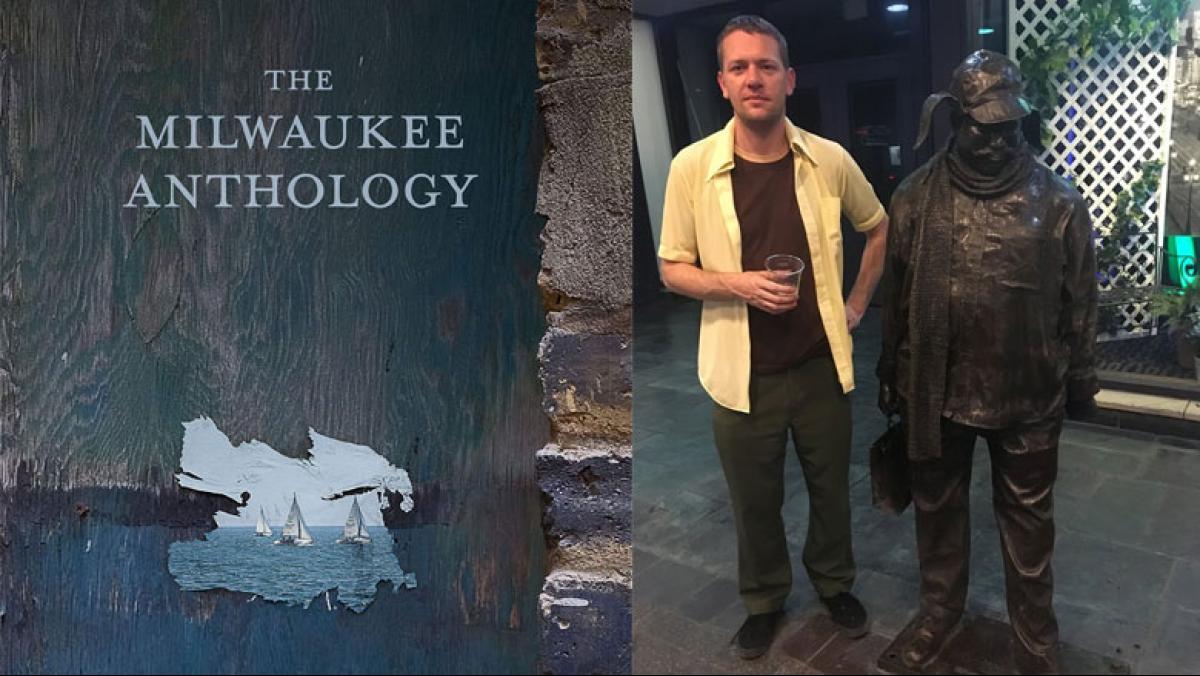Southeastern Wisconsin is the western boundary of the “Rust Belt,” a phrase popularized by presidential candidate Walter Mondale in 1984 to describe a sizeable chunk of America that was—and still is—facing an uncertain post-industrial future. Highway 26 is arguably the symbolic line in Wisconsin that divides regions to the west, built around agriculture and resource extraction, from the cities built upon the foundations of the Industrial Revolution: Janesville, Beloit, Sheboygan, and Milwaukee.
So it makes sense for Belt Publishing to assemble an anthology of Milwaukee-themed essays and poems in its quest to restore the tarnished image of the Rust Belt region. In prior anthologies Belt Publishing has focused on Ohio, Pennsylvania, and Michigan, unquestionably the heart of the Rust Belt. With The Milwaukee Anthology the Cleveland-based publisher has arrived at the region’s perimeter.
In The Milwaukee Anthology, writer and reporter Justin Kern has assembled 59 works by longtime residents, newcomers, expatriates, poets, and journalists eager to share Milwaukee’s story—its charms and burdens—with the world.
The result is a story of borders. Milwaukee’s class and racial divisions are two of The Milwaukee Anthology’s recurring themes. Writer Lauren Sieben, for example, recounts taking a bus tour that reveals how two centuries of “redlining,” a practice of covert housing segregation, continues to divide the city today. Another border lies between past and present, with sharp portraits of a city that treasures its history, as in Edgar Mendez’s tribute to the neighborhood taverns that are slowly fading from the city’s landscape.
The Milwaukee Anthology shines brightest when contemplating Milwaukee’s borderlands, energetic communities that defy the city’s stolid reputation. Neighbors gather to paint murals in Tia Richardson’s hopeful essay about Sherman Park, a community grappling with the complex relationship between law enforcement and people of color. Volunteers broadcast from a low-power radio station in Zack Pieper’s funny biography of station owner Xavier Leplae and his ever-changing Riverwest neighborhood. Swimmers wade into the long-taboo Milwaukee River in ecologist Cheryl Nenn’s darkly comic story of the river’s environmental challenges and recovery. It is in these places, where people of different classes, races, religions, and generations mingle, where the city uneasily but often joyfully charts its future.
The Milwaukee revealed in this anthology is a complex, vibrant place, a counterpoint to the stale typecasting in too much of our state’s public discourse. “So what is Sherman Park? Is it the ’hood or is it Urban Mayberry?” writes Laura Richard Marshall. “I don’t think either description fits. I think this neighborhood is more like art, in progress. And the people who live here are artists, responding honestly to the underbelly we’ve seen and creating a culture that is beautiful, honest, and worthy.” Marshall is writing about Sherman Park, but she is describing Milwaukee, too.




